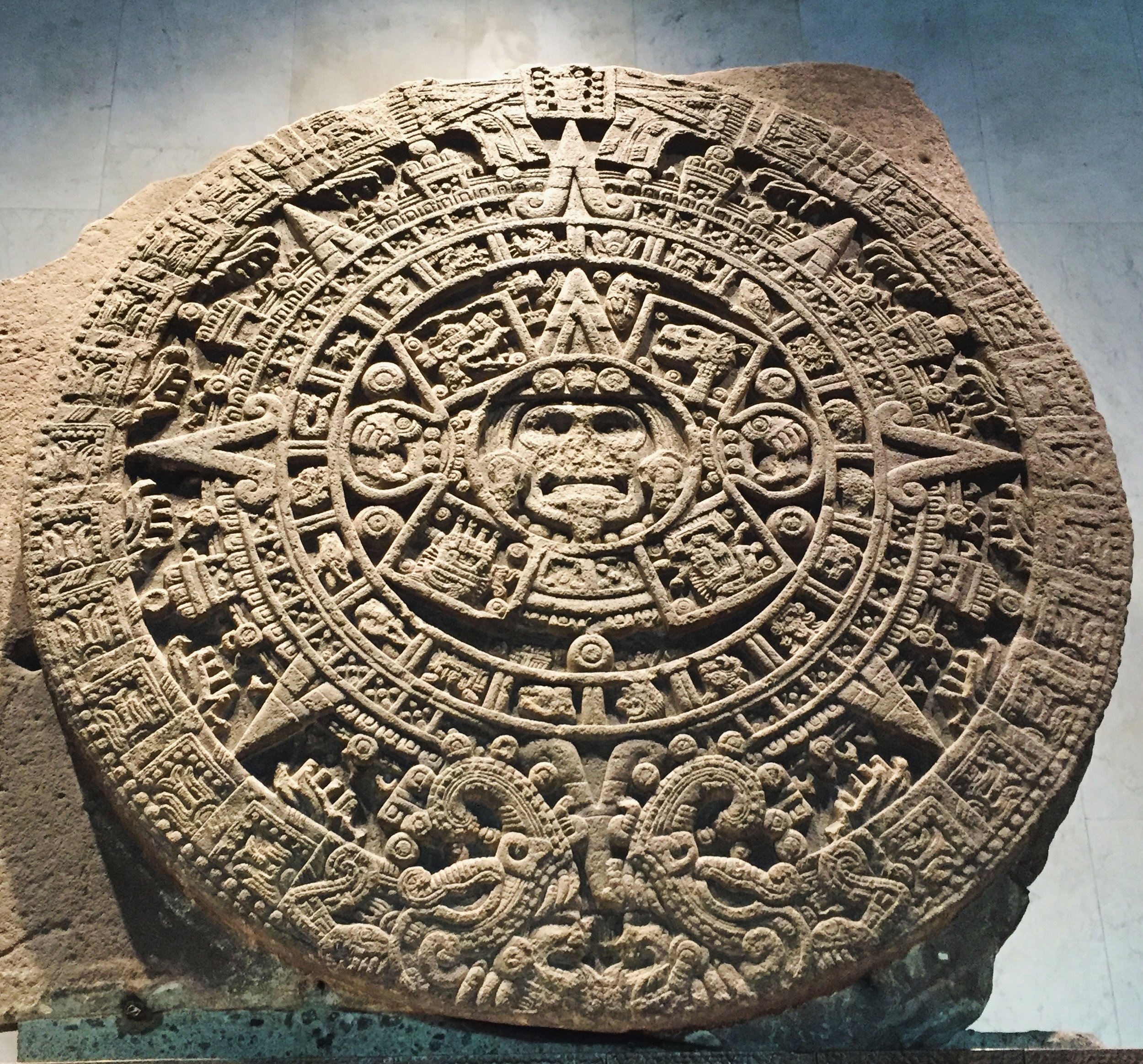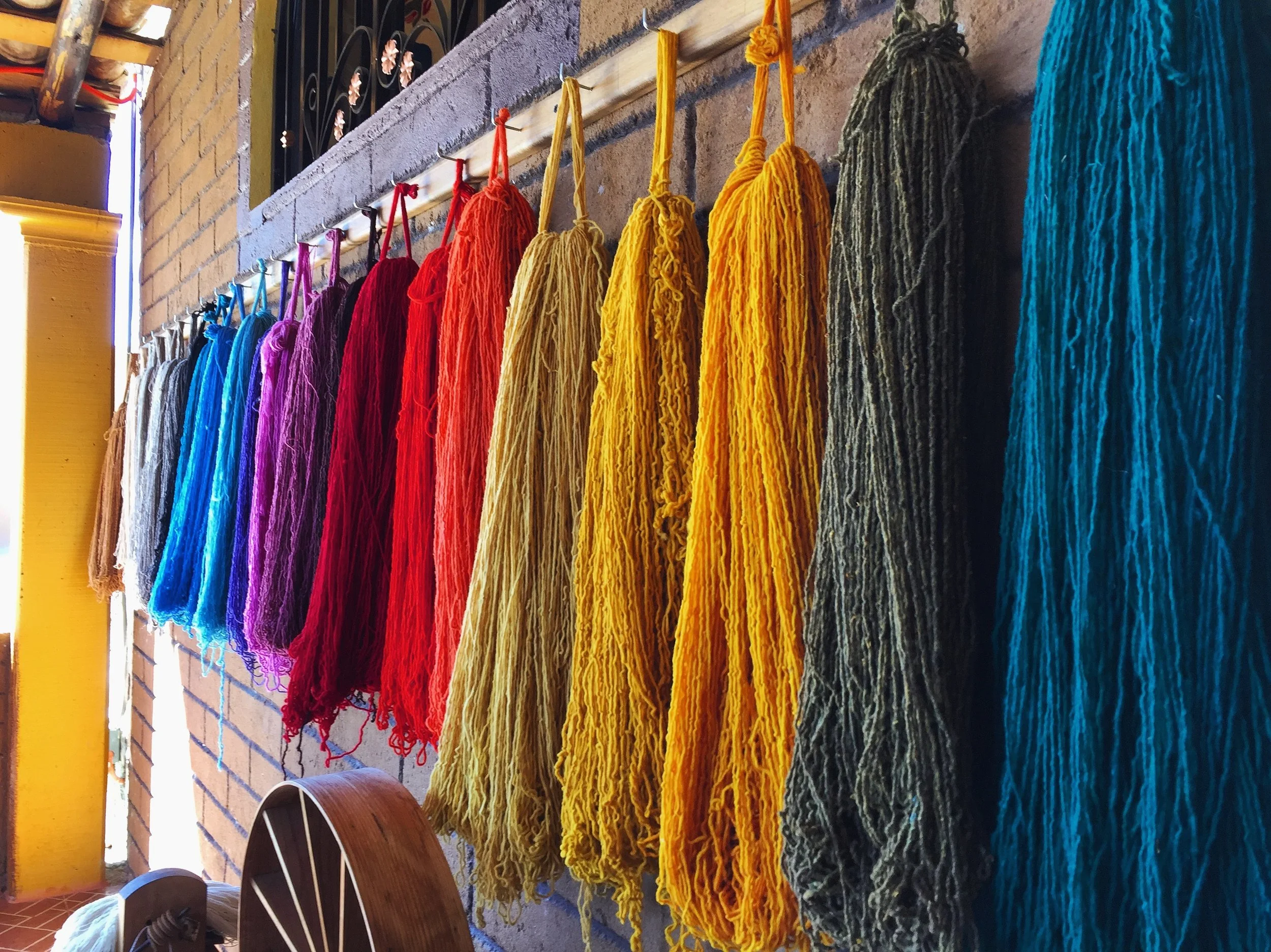Of a museum and discovering ancient civilizations

A story about my experience in Mexico City's Museo Nacional de Antropología (National Museum of Anthropology), first encounter with ancient Mesoamerican artifacts and the 'discovery' of a multitude of ancient civilizations.
“The Mexican people lift this monument in honor of the admirable cultures that flourished during the Pre-Columbian period in regions that are now territory of the Republic. In front of the testimonies of those cultures, the Mexico of today pays tribute to the indigenous people of Mexico, in whose example we recognize characteristics of our national originality.”
The museum is located a bit out of the historical center of Mexico City, within the city's lungs that is the Chapultepec Park. When we arrived, we were greeted by colourful stalls selling a variety of snacks, souvenirs, drinks and any other items imaginable, lining up the pavements leading to the museum entrance. The sight of these makeshift stands, with hawkers shouting out to you trying to get you to buy their goods, is very much reminiscent of how things are in Indonesia. I remember on Sundays, in and around public spaces in the city, you will usually encounter these sort of stands and carts selling anything from fresh fruits and sodas to underwear and pickled vegetables.
Amidst the shouts and laughter of children playing in the nearby fountains, Bobby decided to buy a cup of the popular and cheap Aguas Frescas sold by a nearby street vendor. He opted for the Horchata which came in an incredibly humongous cup. The Horchata itself was delicious and so refreshing in the sweltering heat of the late afternoon Mexico City sun. It took us about 10 minutes (and a brain freeze) to finally finish the drink as quickly as possible; partly due to thirst but also to maximize the time we have to visit the museum.
The museum is free for Mexican people on a Sunday, as is the case with any museums and archeological sites across the country. Thinking about it now, I think this is such a brilliant incentive not only to educate the nation but also to get them acquainted with the country's past and heritage. I believe it was because of this free entry policy that the area around the museum became such a lively hub of social interaction between the different people of the city, coming from all sorts of different classes and background, to enjoy themselves. A brief Sunday respite from the gruelling weekday routines. It made for a more crowded museum than any other day, but also one where you can catch more glimpses of the locals enjoying themselves on their off day.
After paying for our tickets and crossing the museum's (rather unimpressive) main entrance we had our first moments of wonder when we encountered the museum's great fountain supporting an umbrella of concrete spanning courtyard of the museum. After a few minutes admiring the fountain (and resisting the temptation to play around the water) we headed straight across the museum courtyard, skipping a few of the initial rooms in the process, to arrive at the Aztec or Mexicas section of the museum.
Before then, I have never really been acquainted properly with most Mesoamerican civilizations. And although I have read a couple of books about them, I have never really been able to put them into context. Back then it almost felt as if I have never really stumbled upon any artifacts from Mesoamerica in the museums that I have visited; or if I did, they were not memorable enough for me to remember. Safe to say that there is no forgetting what we encountered at the museum that day. The collection was just incredible. Within the galleries of the museum we found monumental statues, delicately carved stelae, potteries, colourful murals, recreated tombs and many more artifacts from Mesoamerica's various Pre-Colombian civilizations.
The centerpiece of the Aztec exhibit, and probably one of the most important artifacts on display in the museum, is the Aztec Sun Stone. The stone is both monumental in scale and in beauty. It was only found in the late 18th century underneath the Metropolitan Cathedral when restoration and construction work was being done there. The image of the Sun Stone now adorns the coins of the Mexican currency.
Even after more than 2 centuries after its discovery, there are still debates about the function of the stone. Many scholars, including those who originally found the stone, believed that this is some form of a calendar stone, showing the 5 different ages that our world is going through according to the Aztec Mythology. Whilst the archeologists and anthropologists at the museum thought differently. All of the information panels in the museum stated that this stone had been 'mistakenly claimed' to be a calendar stone. When in fact, it was some form a gladiatorial tablet or altar in which sacrifices were conducted. This sort of feeds into the idea that I have discussed in my earlier post, that even though the Aztecs were a fairly recent civilization in the grand scheme of things, very little is known about them due to the destruction that their civilization endured under the Spaniards.
After the Aztecs exhibit, we then went around the different galleries arranged all around the central courtyard of the museum. Each gallery was dedicated to a specific civilization which once ruled over the different parts of Mexico. The section on Teotihuacan culture was of particular interest to us since we were planning to visit Teotihuacan the next morning. In that exhibit we encountered a full size reconstruction of a section of the Pyramid of the Feathered Serpent in Teotihuacan, complete with the original colours which once adorned the statues and walls of the pyramid. It was definitely one of the most impressive sights I have ever seen in a museum.
Another highlight of our visit was when we went around in the Mayan section and found that they had a full sized reproduction of the temple of Hochoob showing all of the intricate ornamentation of the original. This reproduction was located on an outside portion of the museum, in a small garden that has been fashioned to look like a tropical jungle deep in central Mexico. This was such a surprise as it really felt like stumbling upon an ancient temple in the middle of the city.
The lengths the museum go to create experiences to give context to the knowledge they're imparting is in a level that I don't think I have seen in any other museums before, and this lead me to a rather personal observation of the museum itself. The museum is called the National Museum of Anthropology and therefore it is ultimately dedicated to the study of human societies and cultures and their development. Whilst a lot of museums treat and display their artifacts as archeological findings and therefore do not try very hard to put them into context; this museum tried above all to give context and to present each artifact as a strand that is to be weaved with thousands of other strands from other artifacts to form a fabric of understanding about the civilizations which had once created them.
The information panels in the museum focuses on educating the audience of the way of life of those civilizations and reconstructing elements of that day to day experience whenever possible. They did this by reconstructing great tombs, sections of temples and even mock ups of dwellings to let us see the artifacts in their intended environment. This reminded me a lot of the sensitivity and care in which the artifacts were displayed in the Acropolis museum in Athens. The respect and love they showed to the artifacts was more than evident. To them, the museum is not just a mere space to exhibit findings, it is a repository of the country's colourful and varied history and of the steps their ancestors took that finally lead to the birth of their nation.
The museum is known as the largest and most famous museum in all of Mexico and it was not hard to see why after experiencing the museum first-hand. Their collection of ancient Mesoamerican artifacts was just simply unbelievable. Within the hallways and galleries of the museum I discovered one of the most complete snapshot of the various ancient civilizations which once ruled over the vast lands of Central America. It would take a person days to be able to see and explore everything in the museum, which covers an area of more than 79,000 square meters.
Sadly, instead of days all we had were a couple of hours, our rather tired legs after walking around Centro Historico all day and our boundless excitement at the opportunity to catch a glimpse of the wonders of Mexico's ancient civilizations. But even after just 3 hours of exploring the various civilizations and gorging ourselves in the beauty of the artworks produced by them, our brains were just about to burst with information. We left the museum, just as they were closing the gates, tired but ultimately happy and satisfied as the experience had really helped us to understand more, not only about the country that we were currently a guest of, but also of its people alongside their respect and love of their own history and heritage. We came in not knowing much about any of the civilizations and came out feeling like we had just "discovered" not just one but a multitude of lost civilizations in just a few hours.
A twenty-something trainee solicitor currently based in New York City. I created this blog with the intention to both record and share my thoughts and experiences relating to the things I love most in life, which is arts and culture, food and traveling. I was born and raised in Indonesia, but have lived abroad since I was 15, first in Singapore, then Nottingham, London and now New York City.













